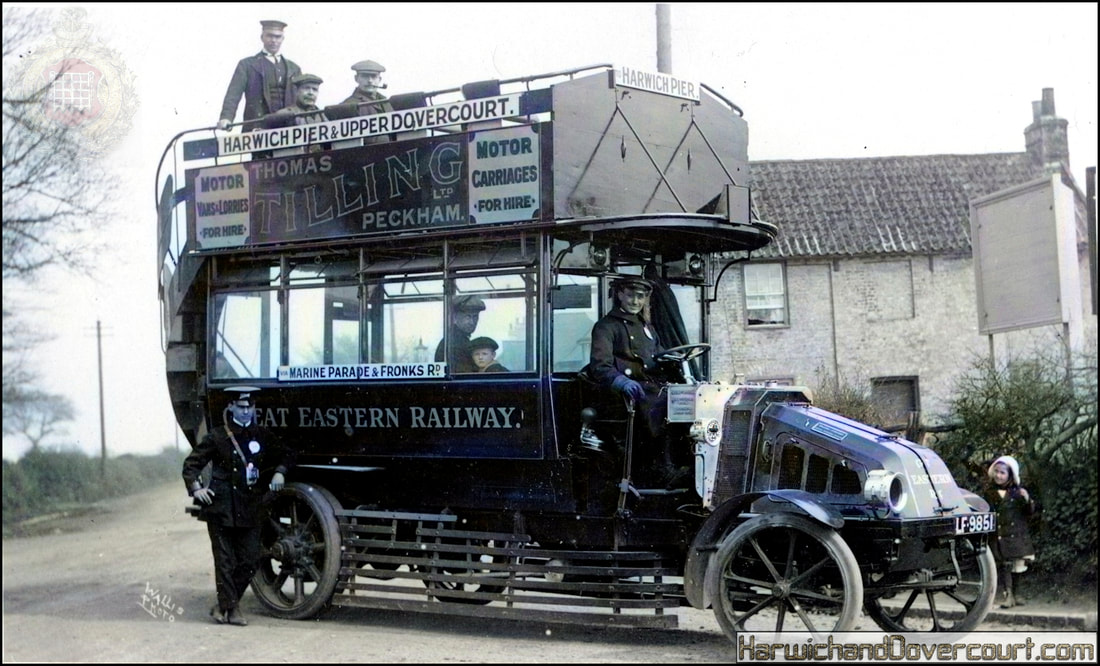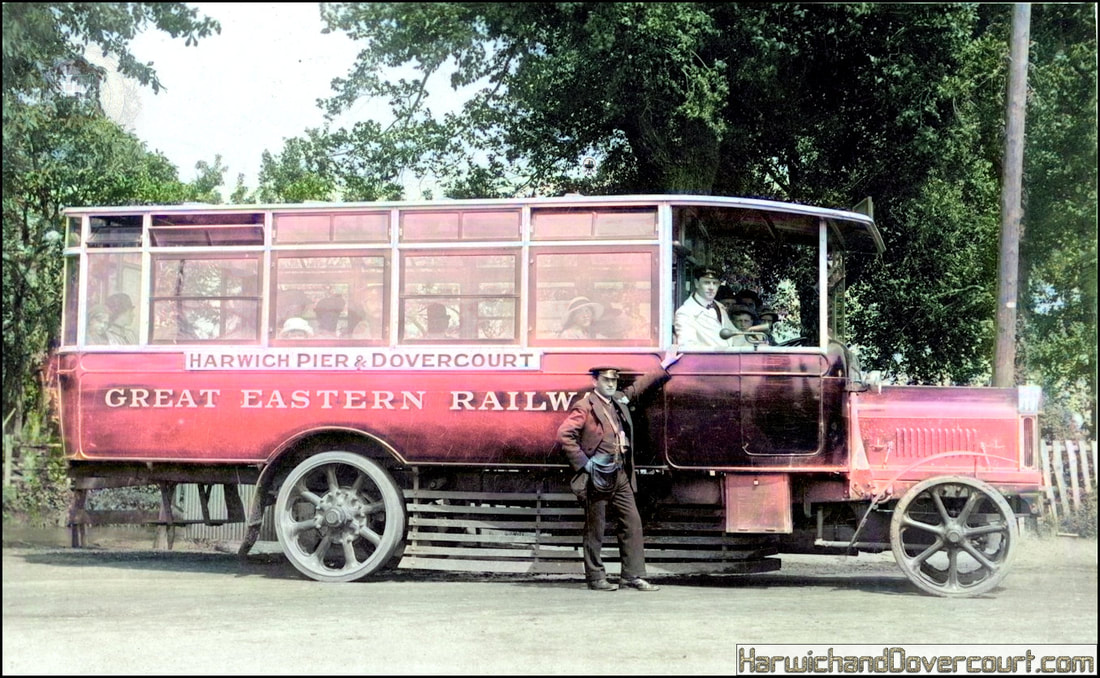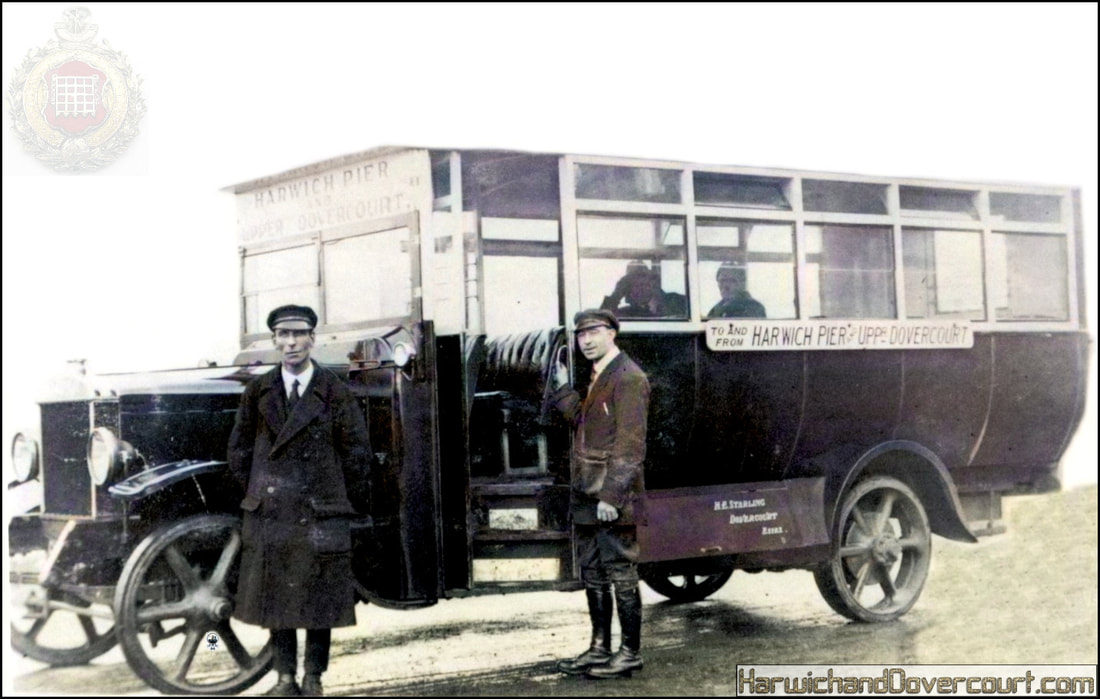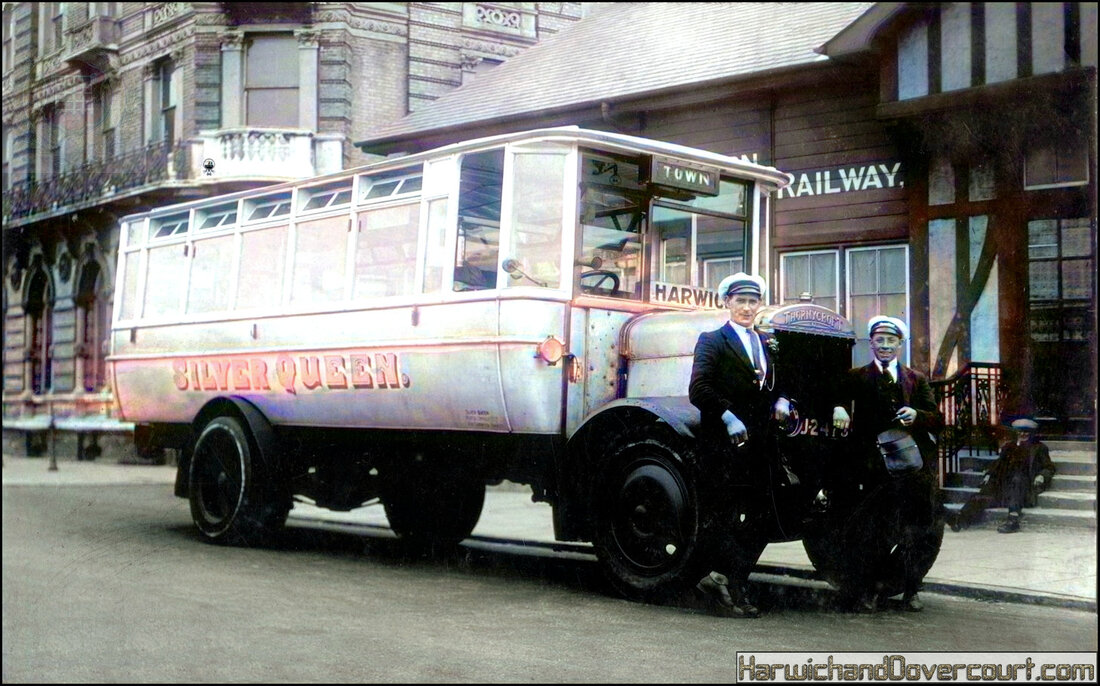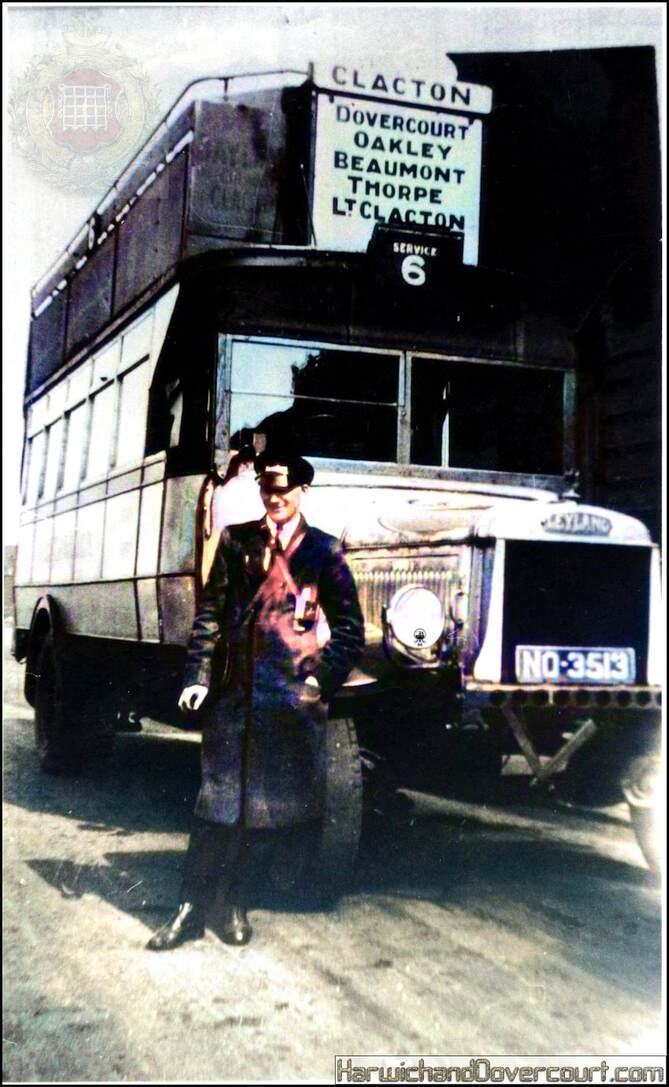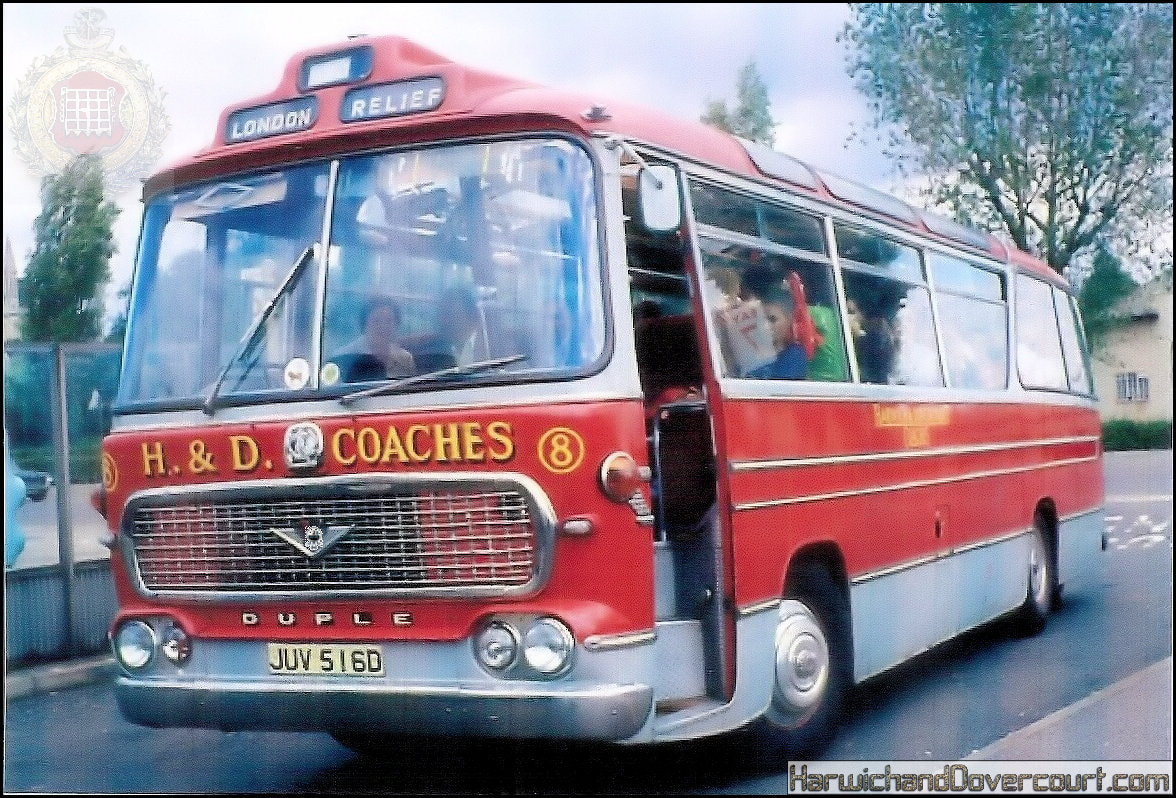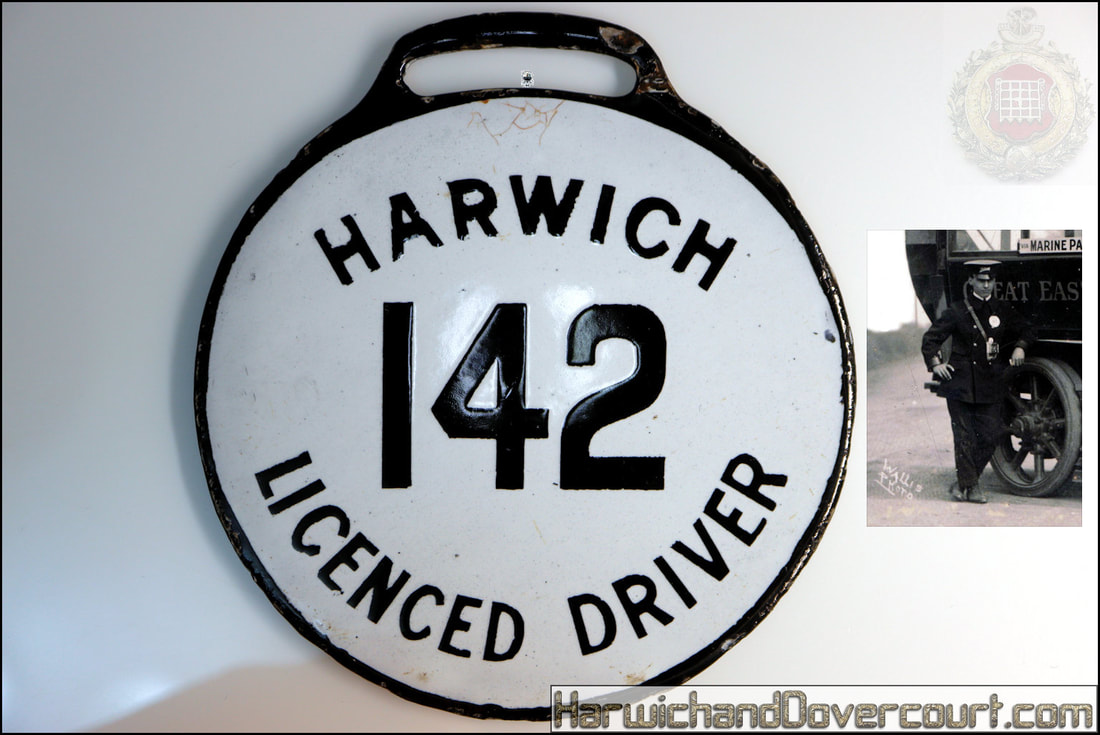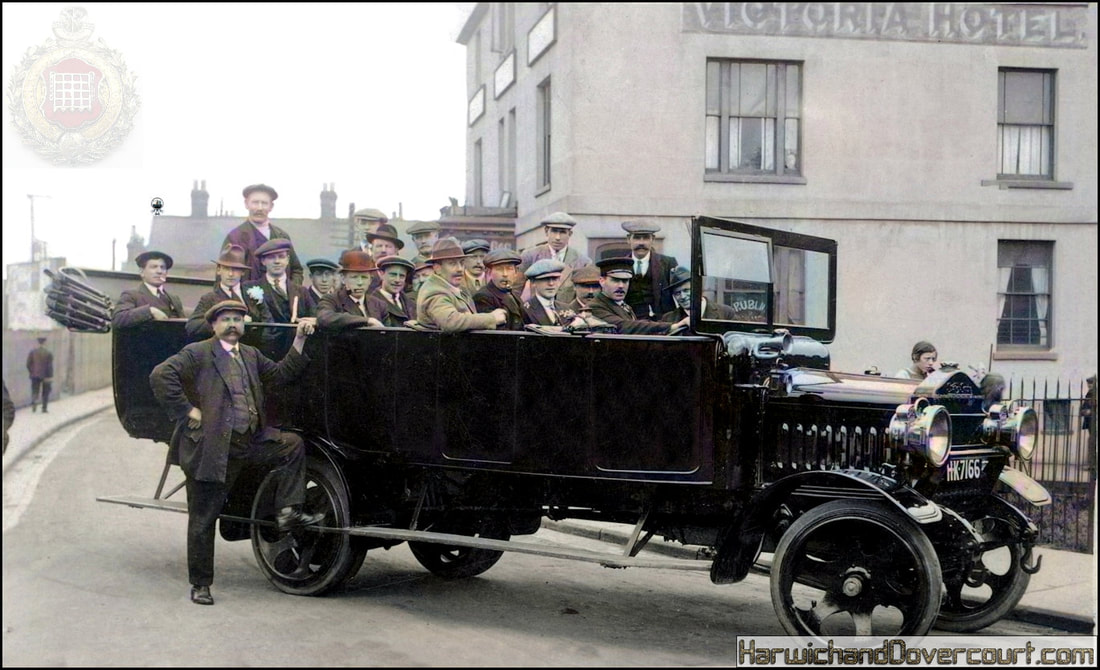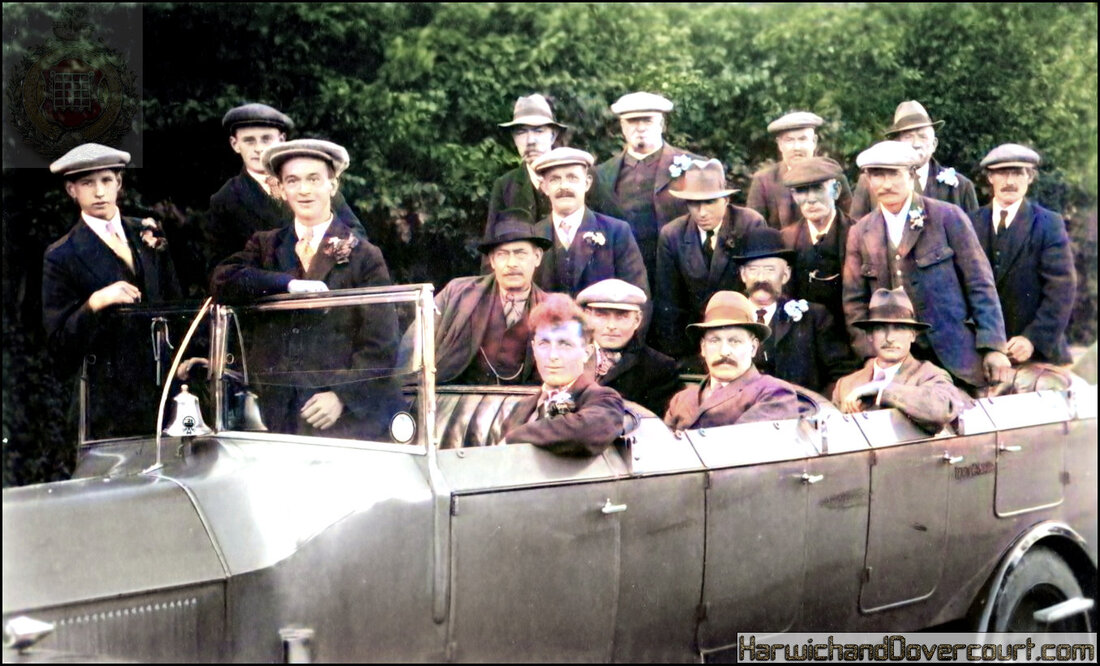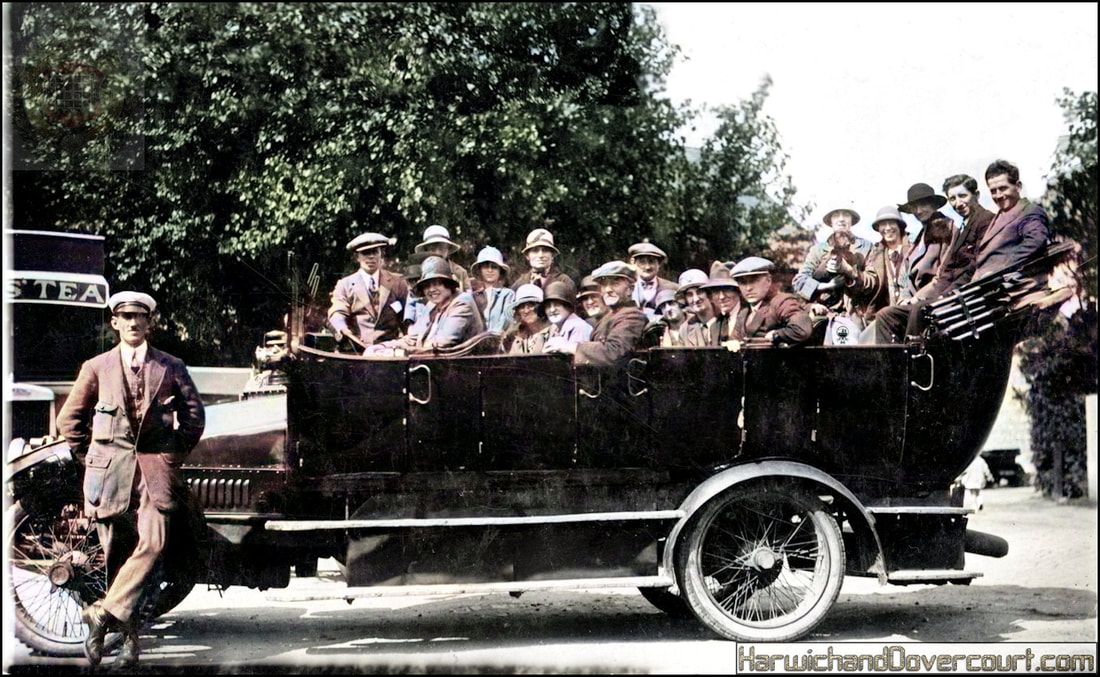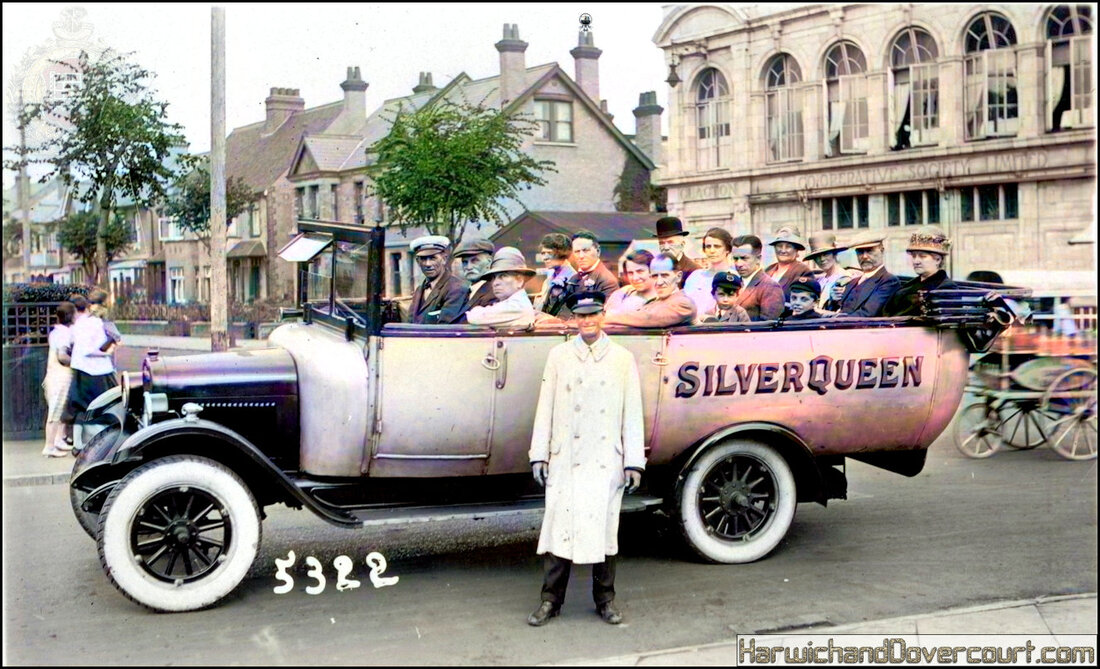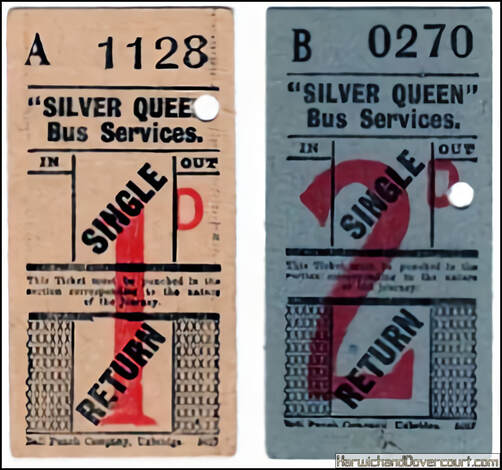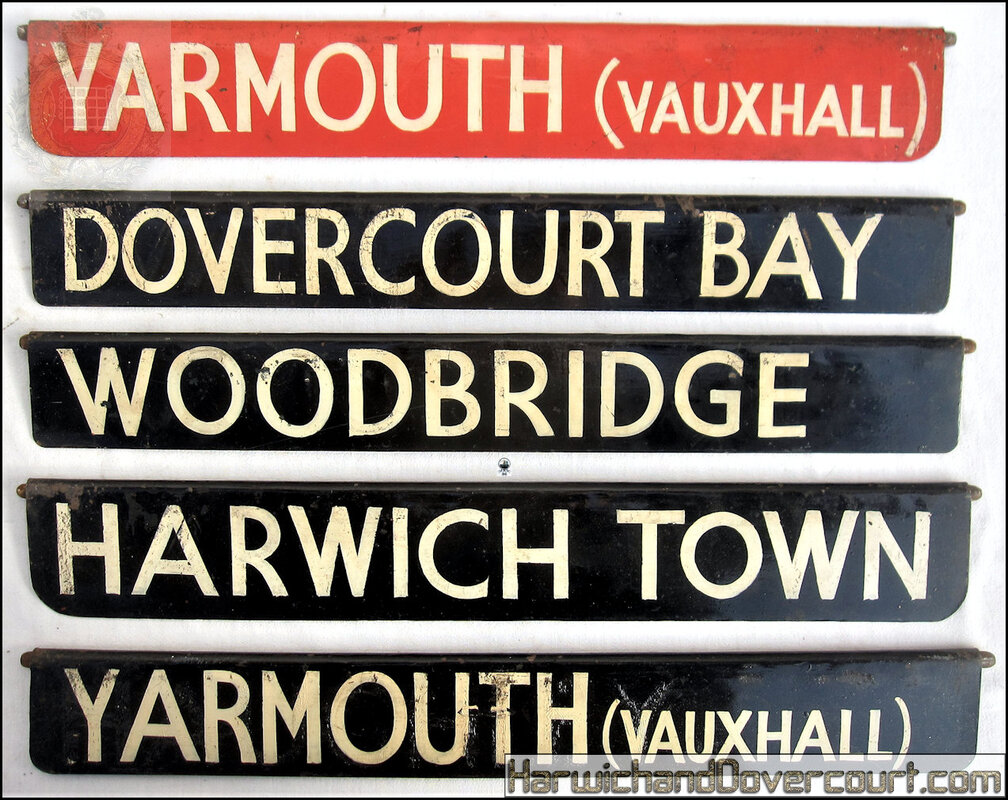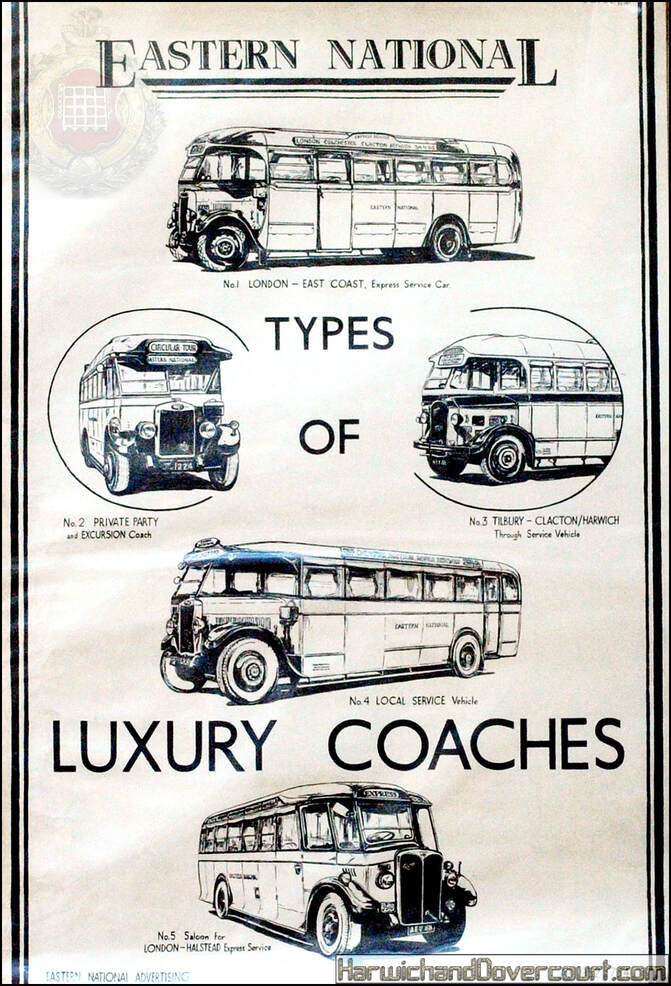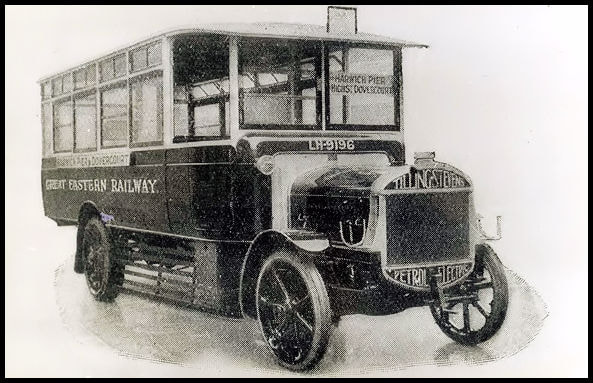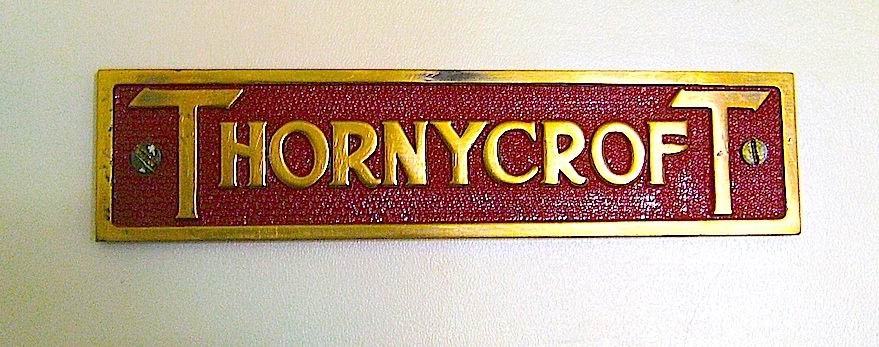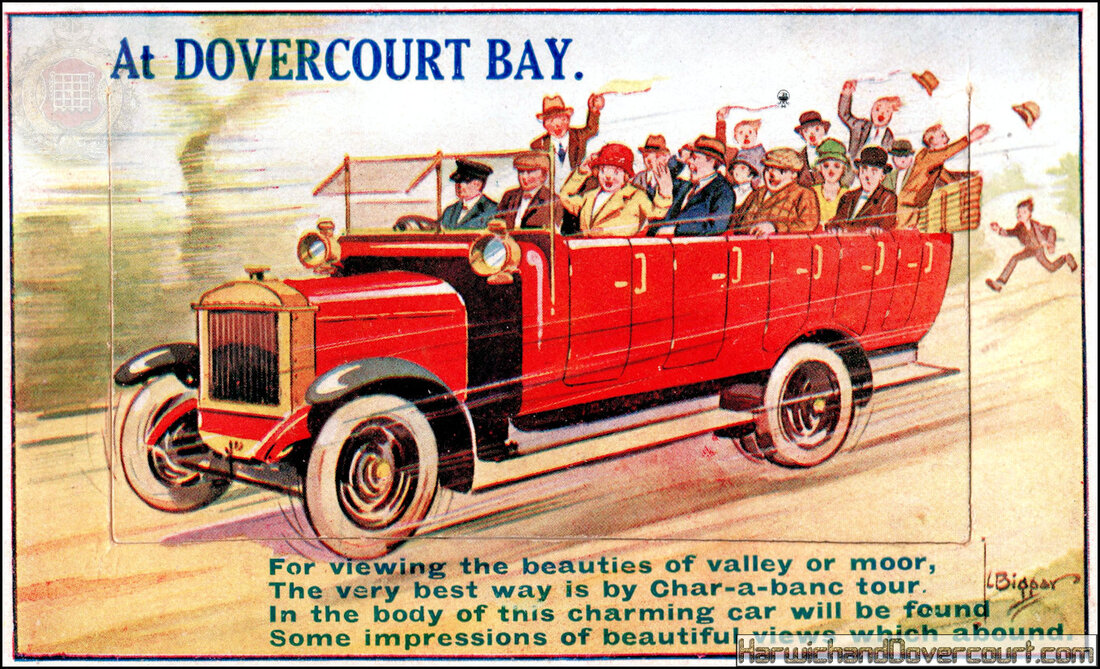Public Buses & Charabancs
~ 01 ~ 1914 "LF-9851" I G.E.R. Harwich and Dovercourt Bus (Tilling-Stevens TTA1) H&D ~
Great Eastern Railway Bus at Upper Dovercourt around April 1914 by Wallis
The Bus Service ran every half hour from the pier at Harwich, through Dovercourt town centre to Upper Dovercourt, via Marine Parade and Fronks Road.
The Service started in 1914 and could carry up to 30 passengers.
This is another good example of "Wallis" Photography" based in Dovercourt and Little Oakley, Essex.
The early "Advertising" signs were a good source of local revenue, aimed at the London visitors to Dovercourt.
London's oldest bus company was started as family business by Thomas Tilling in 1846, and continued by his sons and grandsons.
The Bus Service ran every half hour from the pier at Harwich, through Dovercourt town centre to Upper Dovercourt, via Marine Parade and Fronks Road.
The Service started in 1914 and could carry up to 30 passengers.
This is another good example of "Wallis" Photography" based in Dovercourt and Little Oakley, Essex.
The early "Advertising" signs were a good source of local revenue, aimed at the London visitors to Dovercourt.
London's oldest bus company was started as family business by Thomas Tilling in 1846, and continued by his sons and grandsons.
~ 02 ~ 1914 "LH-9196" I G.E.R. Harwich and Dovercourt Bus (Tilling-Stevens TS3) H&D ~
Great Eastern Railway Bus, preparing for the Upper Dovercourt to Harwich Run in December 1914
The Great Eastern Railway Company, applied to run omnibuses in 1904, to carry both passengers and mail.
On the 1st April 1914 Harwich got a bus service that ran between Harwich and Upper Dovercourt, which was contracted out to Thomas Tilling as a "Summer only" Service. There were two vehicles based in West Street including the LF-9851 seen in the first image, which carried G.E.R. passengers on the lower decks and Thomas Tilling on the upper deck.
The LH-9196 replaced the LF-9851, which only ran from April - November 1914. The Harwich service continued to be operated by Thomas Tilling until 1st January 1923, eventually taken over by London & North Eastern Railways.
The Great Eastern Railway Company, applied to run omnibuses in 1904, to carry both passengers and mail.
On the 1st April 1914 Harwich got a bus service that ran between Harwich and Upper Dovercourt, which was contracted out to Thomas Tilling as a "Summer only" Service. There were two vehicles based in West Street including the LF-9851 seen in the first image, which carried G.E.R. passengers on the lower decks and Thomas Tilling on the upper deck.
The LH-9196 replaced the LF-9851, which only ran from April - November 1914. The Harwich service continued to be operated by Thomas Tilling until 1st January 1923, eventually taken over by London & North Eastern Railways.
~ 03 ~ 1915 "LH-9196" II G.E.R. Harwich and Dovercourt Bus (Tilling-Stevens TS3) H&D ~
~ 04 ~ 1919 "LH-9017" I G.E.R. Harwich and Dovercourt Bus (Tilling-Stevens TS3) H&D ~
Public Bus Outside The Pier Harwich 1919
The Bus Service ran every half hour from the pier through Dovercourt town centre to Upper Dovercourt.
Although not too comfortable with hard rubber tyres, you couldn't complain about the regular service.
Note the railway tracks beneath the bus, where railway carriages carried coal and goods to the quayside
This is another good example of "Bell's Photography" based in Leigh-on-sea.
Postcode for the nearest location is CO12 3HH.
The Bus Service ran every half hour from the pier through Dovercourt town centre to Upper Dovercourt.
Although not too comfortable with hard rubber tyres, you couldn't complain about the regular service.
Note the railway tracks beneath the bus, where railway carriages carried coal and goods to the quayside
This is another good example of "Bell's Photography" based in Leigh-on-sea.
Postcode for the nearest location is CO12 3HH.
~ 05 ~ H.E.Starlings Bus, Dovercourt (1923) H&D ~
~ 06 ~ 1928 "LJ-2475" Silver Queen Bus GER Station Harwich (Thornycroft J) H&D ~
A classic "Silver Queen" Thornycroft bus with drivers, outside the now demolished Quay Pavilion (opposite the Ha'penny Pier).
These "new" single decker buses were introduced around 1925, with solid tyres, although this model has pneumatic tyres, so can be dated to around 1928.
Thornycroft manufactured many industrial and commercial vehicles between 1896 - 1977.
Postcode for the nearest location is CO12 3JW
These "new" single decker buses were introduced around 1925, with solid tyres, although this model has pneumatic tyres, so can be dated to around 1928.
Thornycroft manufactured many industrial and commercial vehicles between 1896 - 1977.
Postcode for the nearest location is CO12 3JW
~ 07 ~ 1929 Freddie Butler and his Silver Queen Bus R H&D ~
~ 08 ~ H&D Duple, Dovercourt (1960) H&D ~
~ 09 ~ Harwich #142 Licenced Driver Enamel Badge (1914) H&D ~
~ 10 ~ Starlings Motor Service, Alexandra Hotel, Dovercourt Bay. (1922) H&D ~
Charabanc Excursions
A charabanc was a type of early motor coach common in Britain during the early part of the twentieth century. The name derives from the French char à bancs meaning a 'carriage with wooden benches' since the passenger seating comprised of forward-facing wooden bench seats arranged in rows, with each row usually accessed by its own door in the side of the vehicle. They were almost always open-topped and open-sided, but invariably had a foldaway roof covering. Later models had side windows for the protection of passengers. Even so, the combination of wooden seats, solid tyres, primitive springs and the usual top speed of 12 mph must have made for a tiring, and somewhat uncomfortable, day out.
The charabanc was especially popular for sight-seeing excursions and annual 'works outings' to the countryside, major towns or the seaside. The most common period of use was up until the 1920's although some remained in use until the Second World War.
The word 'charabanc' was in common usage until the middle of the twentieth century but was deleted as obsolete from the pocket edition of the Collins Dictionary in 2011.
A charabanc was a type of early motor coach common in Britain during the early part of the twentieth century. The name derives from the French char à bancs meaning a 'carriage with wooden benches' since the passenger seating comprised of forward-facing wooden bench seats arranged in rows, with each row usually accessed by its own door in the side of the vehicle. They were almost always open-topped and open-sided, but invariably had a foldaway roof covering. Later models had side windows for the protection of passengers. Even so, the combination of wooden seats, solid tyres, primitive springs and the usual top speed of 12 mph must have made for a tiring, and somewhat uncomfortable, day out.
The charabanc was especially popular for sight-seeing excursions and annual 'works outings' to the countryside, major towns or the seaside. The most common period of use was up until the 1920's although some remained in use until the Second World War.
The word 'charabanc' was in common usage until the middle of the twentieth century but was deleted as obsolete from the pocket edition of the Collins Dictionary in 2011.
~ 11 ~ Charabanc Bus outside the Victoria Hotel, Dovercourt Bay (1922) H&D ~
The Victoria Hotel "Regulars" day-trip out in a beautiful Charabanc from around 1922
Day trips were very popular in the 1920's with the arrival or relatively cheap motorised vehicles.
This Charabanc parked in East St, Dovercourt was a large bus, used for sightseeing tours, especially one with open sides and no centre aisle.
We can see it's clearly a "man's world" from this postcard !!
The Victoria Hotel was sadly demolished after a fire in 2005.
Day trips were very popular in the 1920's with the arrival or relatively cheap motorised vehicles.
This Charabanc parked in East St, Dovercourt was a large bus, used for sightseeing tours, especially one with open sides and no centre aisle.
We can see it's clearly a "man's world" from this postcard !!
The Victoria Hotel was sadly demolished after a fire in 2005.
~ 12 ~ Cherry Tree Charabanc Bus Outing, Little Oakley to Clacton (1924) H&D ~
The "Cherry Tree Mob" Little Oakley, on a Charabanc day trip to Clacton in July 1924.
A shiny charabanc, with a gleaming bell ready for the off to Clacton in July 1924, with regulars from Ye Olde Cherry Tree, Little Oakley.
A Charabanc is a large bus, used on sightseeing tours, especially one with open sides and no centre aisle. Day trips were very popular in the 1920's with the arrival or relatively cheap motorised vehicles. It's clearly a "man's world" from this postcard !!
Postcode for the nearest location at Parkeston Road end is CO12 5JH
A shiny charabanc, with a gleaming bell ready for the off to Clacton in July 1924, with regulars from Ye Olde Cherry Tree, Little Oakley.
A Charabanc is a large bus, used on sightseeing tours, especially one with open sides and no centre aisle. Day trips were very popular in the 1920's with the arrival or relatively cheap motorised vehicles. It's clearly a "man's world" from this postcard !!
Postcode for the nearest location at Parkeston Road end is CO12 5JH
